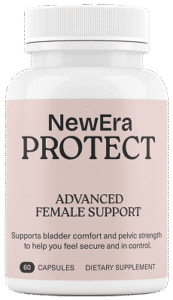Basics about Pharmaceutical Testing
Pharmaceutical testing is a key means of ensuring the safety and efficacy of drugs. Through rigorous testing, the ingredients, dosage, and...
Pharmaceutical testing is a key means of ensuring the safety and efficacy of drugs. Through rigorous testing, the ingredients, dosage, and quality of the drugs can be verified, ensuring their safety and effectiveness in clinical use. For example, stability testing can assess a drug’s performance under different environmental conditions, thereby determining its storage conditions and expiration date, which ensures the safety and efficacy of medication for patients.
Testing of Active Pharmaceutical Ingredients (APIs) and Excipients
Testing of active pharmaceutical ingredients (APIs) and excipients is a critical aspect of the pharmaceutical industry, involving several areas, including the determination of the physicochemical properties of APIs, the selection and compatibility studies of excipients, impurity control, and stability testing.
Structural Identification (NMR, MS, IR)
Purity Testing (HPLC, GC)
Impurity Analysis (LC-MS/MS)
Elemental Analysis (ICP-MS)
Quality Analysis of Finished Pharmaceuticals
Quality analysis of finished pharmaceuticals is a key process to ensure that drugs maintain stability and comply with quality standards during production, storage, and use. It encompasses chemical, physical, and microbiological testing to ensure the safety, efficacy, and compliance of drugs.
Determination of Active Ingredient Content (HPLC, UV-Vis)
Disintegration, Dissolution, and Uniformity Testing (Pharmacopeia Methods)
Analysis of Physicochemical Indicators such as pH, Moisture, and Viscosity
Impurity Analysis and Toxicity Studies
Impurity analysis is crucial for ensuring the safety and efficacy of drugs. Impurities can affect the drug’s efficacy, stability, toxicity, and bioavailability. Therefore, impurity analysis not only helps assess drug quality but also provides essential data for safety evaluations.
Organic Impurities (ICH Q3A/Q3B Standards)
Inorganic Impurities (USP<232>/<233>)
Residual Solvents (GC-HS)
Degradation Product Analysis (Forced Degradation Studies)
ICH
ICH is an international organization initiated by the European Union, the United States, and Japan, aimed at harmonizing global technical requirements for drug registration to ensure the safety, efficacy, and quality of pharmaceuticals. ICH standards cover various aspects, including quality, safety, and efficacy, serving as an important reference for drug registration worldwide. For example, the ICH Q series guidelines detail quality control, stability testing, clinical trial design, and other aspects of the drug manufacturing process.
USP (United States Pharmacopeia)
USP is a set of internationally recognized quality standards for pharmaceuticals established by the United States Pharmacopeial Convention, widely used in the global pharmaceutical market. USP standards provide detailed analytical methods and acceptance criteria for quality control, ensuring the quality and safety of pharmaceuticals throughout the production and distribution processes.
EP (European Pharmacopoeia)
EP is a set of quality standards for pharmaceuticals established by the European Medicines Agency (EMA), complementing USP and ICH standards. EP standards hold significant importance in global drug registration, particularly among EU member states.
JP (Japanese Pharmacopoeia)
JP is a set of quality standards for pharmaceuticals established by the Japanese Pharmacopoeia Council, applicable to the Japanese market. JP standards align with ICH and USP standards in many respects, ensuring mutual recognition of pharmaceuticals on a global scale.
FDA (U.S. Food and Drug Administration)
FDA is the primary agency responsible for drug registration and regulation in the United States. FDA standards are mainly implemented through Drug Master Files (DMF) and Good Manufacturing Practice (GMP) certification. The FDA has strict registration requirements for active pharmaceutical ingredients and finished products to ensure their safety and efficacy





